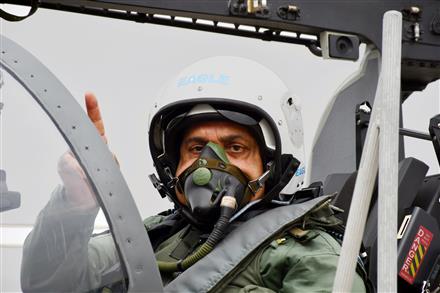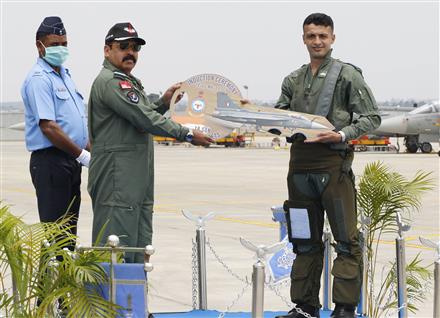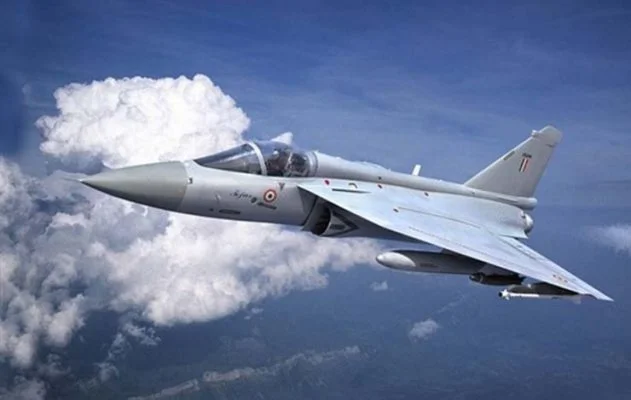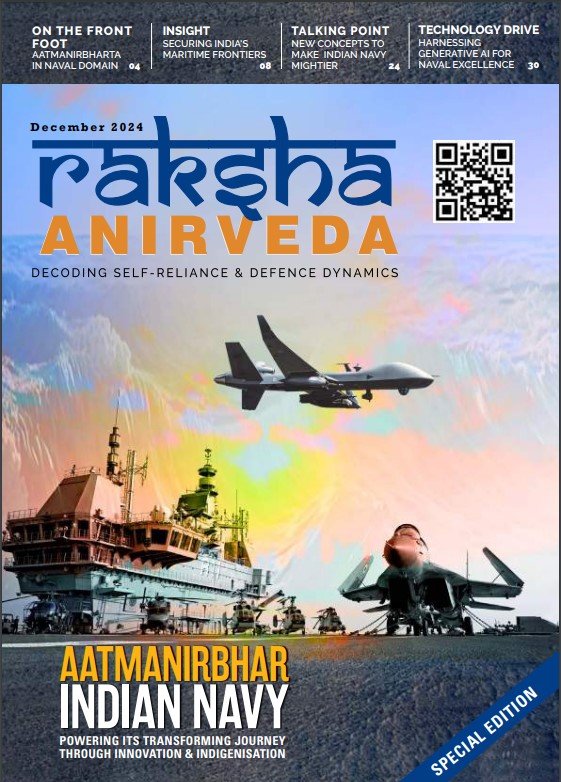New Delhi: Faced with natural calamities and the COVID-19 pandemic and increasing threat along the Sino-Indian border and growing terrorist problem encouraged by Pakistan, the government continued to keep national security in mind as the second squadron of indigenously built LCA Tejas fighter aircraft was inducted by Chief of Air Staff, Air Chief Marshal RKS Bhadauria at Sulur airbase in Southern India on May 27.
He flew the single-seater aircraft.

The No 18 Squadron ‘Flying Bullets’ which was formed on April 15, 1965 and used to operate MiG-27 fighter jets had the first IAF pilot to win the highest battle honour Param Vir Chakra, Flying Officer Nirmal Jit Singh Sekhon posthumously in the 1971 Indo-Pakistan war.
The squadron was formed with the motto “Teevra aur Nirbhaya” meaning “Swift and Fearless”. It was the first to land and operate from Srinagar.
The squadron was presented with President’s Standard in November 2015 and got the sobriquet – ‘Defenders of Kashmir Valley.’
It is an indigenous fourth-generation tail-less compound delta wing aircraft.
The LCA design was finalised in 1990 with relaxed static stability (RSS) to enhance manoeuvrability and a host of other advanced features. A review committee was formed in May 1989 which reported that Indian infrastructure, facilities and technology had advanced sufficiently in most areas to undertake the project.
The aircraft is equipped with fly-by-wire flight control system, integrated digital avionics, multimode radar and its structure is made out of composite material.
Tejas is the lightest and smallest in its group of supersonic combat aircraft.
The IAF has inducted 16 weaponised Tejas fighter jets into its combat fleet since June 2018. The LCA Tejas is equipped with fly-by-wire flight control system, integrated digital avionics and multimode radar.
The fourth-generation fighter aircraft is designed and developed by the Aeronautical Development Agency (ADA) of Defence Research and Development Organisation (DRDO). The LCAs are being manufactured by the defence public sector undertaking (DPSU) Hindustan Aeronautics Ltd (HAL).
The IAF’s first Tejas squadron was raised at the Sulur air base in 2016 with two aircraft and more planes joined the fleet progressively.

“We are committed to the Tejas programme and all its variants. As I have reiterated to you earlier, the induction of the second squadron is sure to boost the operational utilisation of Tejas. To achieve our goals and to see the complete operational utility of Tejas, we will need these fighters in large numbers. And, this can be achieved only if the public and private industries take the lead,” Air Chief Marshal Bhadauria said.
The Flying Bullets will be commanded by Group Captain Manish Tolani, who was commissioned into the fighter stream of IAF in 2001. He was earlier the Flight Commander of Flying Daggers, and is a Cat-A Qualified Instructor and an Instrument Rating Instructor\Examiner with vast experience on MiG 29, MiG 21, Hawk Mk 132A and now Tejas. He will be assisted by Group Captain Dinesh Dhankhar as the Flight Commander of Flying Bullets.
Interestingly, IAF also positioned Gp Capt Madhav Rangachari as the COO for AFS Sulur. Gp Capt Rangachari is the first CO of Flying Daggers and has close to six years of experience with the Tejas platform and is the ‘best man available for the best job,’ to guide the young breed of pilots.
HAL now hopes to deliver the entire block of 16 FOC fighters to IAF by September 2022. “We are currently extending post-delivery and warranty support for the Initial Operational Clearance fleet. The Tejas Mk-1A delivery will commence in FY 2023-24 at a rate of 16 aircraft per year,” says an official.
The next two fighters Tejas SP-22 and Tejas SP-23 are expected to join Flying Bullets in the next one month.
The IAF has placed an order for 40 Tejas aircraft, and is likely to seal a contract with HAL for another 83 aircraft at a cost of around Rs 38,000 crore.
















